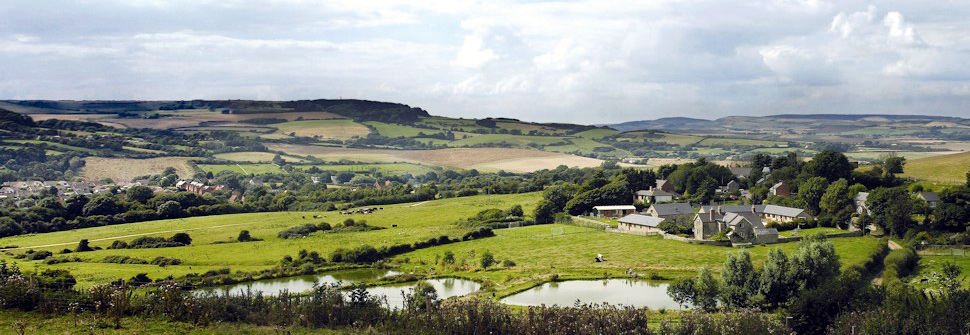Newtown
Newtown has a truly extraordinary history. Sacked by the Danes under Sweyn, in 1001, it rose from its ruins to become the flourishing New Town and port of Francheville (Free Town), with two main streets, Gold Street and High Street. Aymer de Valence, Bishop-elect of Winchester, who was then the overlord, granted franchises and liberties which were confirmed by Edward I. In 1318 Edward III granted the right to a market and fair, but in 1337 the prosperous little town was completely destroyed by the French.
For two centuries a few inhabitants struggled on as best they could. A deed of 1558 records the exchange of "3 stitches of ground – for a little close or parrock called Shottes". One hundred years later Newtown returned two Members of Parliament! Gradually the population decreased, until in the 1600s only 11 houses were recorded in the parish. By 1831 there were only 68 inhabitants, of whom 39 were qualified to elect their two Parliamentary representatives. The following year the Boroughs were disenfranchised, and even that glory departed.
An embankment 1¼ miles long had been built, probably in the 18th century, to enclose 120 acres of marsh-land; this lasted until 1954, when the sea broke through and again covered the reclaimed lands.
Now the oyster fishery has been restored, and in 1966 (Conserva- tion Year), the Island County Council was responsible for creating a fascinating Nature Reserve, which received the award in 1970 of a Plaque from the Duke of Edinburgh. Here, under the guidance of a Warden, hundreds of people of all ages are able to enjoy every aspect of natural history, particularly the great number of wildfowl which frequent the marsh.
A tiny Church had been provided in 1592 as a Chapel of Ease to Calbourne, but this was in a state of dilapidation by 1663. A new Church was built in Victorian times.
The Town Hall, now a lonely relic of Newtown's early importance, was built by public subscription on 1699. The basement walls appear to be older than the rest of the structure, which houses a small museum. Nearby is "Noah's Ark", which until 1916 was the tiny village inn, "The Francheville Arms".
The early history of the Newtown Mace is unknown, but it is tentatively dated to the time of Henry VII; in its form it shows an interesting transition from the old War Mace to a Civil Mace.

